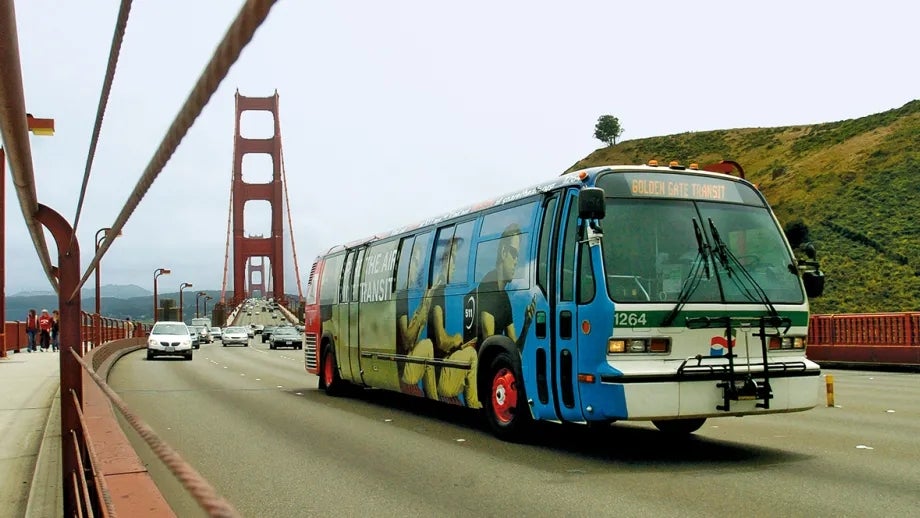Air District and MTC Approve Commuter Benefits Pilot Program
The Metropolitan Transportation Commission today joined the Bay Area Air Quality Management District in approving the launch of the Bay Area Commuter Benefits Program, a joint pilot program that requires employers with 50 or more full-time employees in the Bay Area to offer commuter benefits to their employees. The Air District Board of Directors unanimously approved the program on March 19. Employers subject to the program must select a commuter benefit, register via the program website and implement their program by September 30, 2014.
The Air District and MTC developed the Bay Area Commuter Benefits Program in response to Senate Bill 1339, which was signed into law by Governor Brown in September 2012. The goal of the program is to reduce greenhouse gas emissions and traffic congestion by using the federal tax code to encourage employees to commute via alternatives to driving alone. The law is designed to give employers various options for compliance, including simply offering their employees the ability to pay for transit or vanpooling with pre-tax dollars, which can save both employers and employees money through lower taxes. The program was modeled on commuter benefit ordinances established in 2009 in San Francisco, Berkeley and Richmond, as well as at San Francisco International Airport.
“The Commuter Benefits Program just makes sense – it saves money through potential payroll tax savings for employers and employees while reducing worker stress, traffic congestion and improving air quality,” said Jack Broadbent, executive officer of the Air District. “Bay Area employers and employees can now play a direct role in helping the region achieve clean air and a better quality of life.”
The Bay Area Commuter Benefits Program gives employers the flexibility to offer one or more of the following commuter benefit options to their employees:
- Option 1: Pre-Tax Benefit - Allow employees to exclude up to $130 of their transit or vanpooling expenses each month from taxable income.
- Option 2: Employer-Provided Subsidy - Provide a subsidy to reduce or cover employees’ monthly transit or vanpool costs, up to $75 per month.
- Option 3: Employer-Provided Transit - Provide a free or low-cost transit service for employees, such as a bus, shuttle or vanpool service.
- Option 4: Alternative Commuter Benefit - Provide an alternative commuter benefit that is as effective in reducing single-occupancy commute trips as Options 1, 2 or 3.
“We know most Bay Area employees don’t work for Google, Apple, Genentech or other companies that operate their own transit fleets. We expect by far the majority of employers will choose to offer the pre-tax benefit option to their employees,” said MTC Chair and Orinda City Councilmember Amy Rein Worth. “This option imposes no new costs on employers. And it gives employees complete freedom to choose whether to use the benefit. But for those who do ride transit or participate in a vanpool, and who do choose the pre-tax option, it has the potential to save hundreds of dollars per year.”
When employees choose the pre-tax benefit option, the reduction in taxable income allows their employers to reduce their Social Security and Medicare payroll taxes. Employees can save as much as 40 percent on their monthly transit or vanpool costs by excluding these costs from taxable income.
“With the good news of our economy improving, comes the bad news of increased traffic and pollution. The Commuter Benefits Program makes sense for Bay Area businesses and organizations today,” said James Paxson, general manager of Hacienda Business Park in Pleasanton. “In addition, employees who have options for their commute, beyond driving alone, tend to be more productive in their work and have an overall higher level of job satisfaction – all of which is good for business.”
Employees are more likely to consider alternatives if they are encouraged by their employer. Research shows that employers can reduce vehicle trips to their worksites by promoting alternative commute modes, such as transit, ridesharing, bicycling, walking, and telecommuting. Employers subject to the program will be notified by mail by the Air District and must register at 511.org, click on Bay Area Commuter Benefits Program and select and implement their program by September 30, 2014.
Assistance is available through MTC’s 511 Regional Rideshare Program to help employers comply with the Commuter Benefits Program. Employers can visit 511.org click Bay Area Commuter Benefits Program for program information and employer outreach staff assistance or simply call 511 and say “Commuter Benefits” at the first prompt to help them get started. Detailed information about the Commuter Benefits Program and employer requirements also can be found in the “Employer Guide” at 511.org.
SB 1339 authorizes the Air District and MTC to adopt and implement the Commuter Benefits Program on a pilot basis through the end of 2016.


Submit your comment
In order to receive a reply to your comment, please provide an email address.